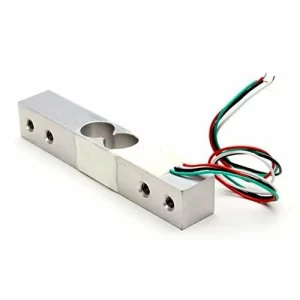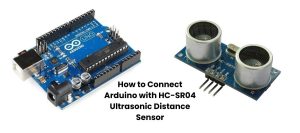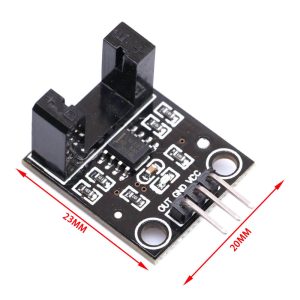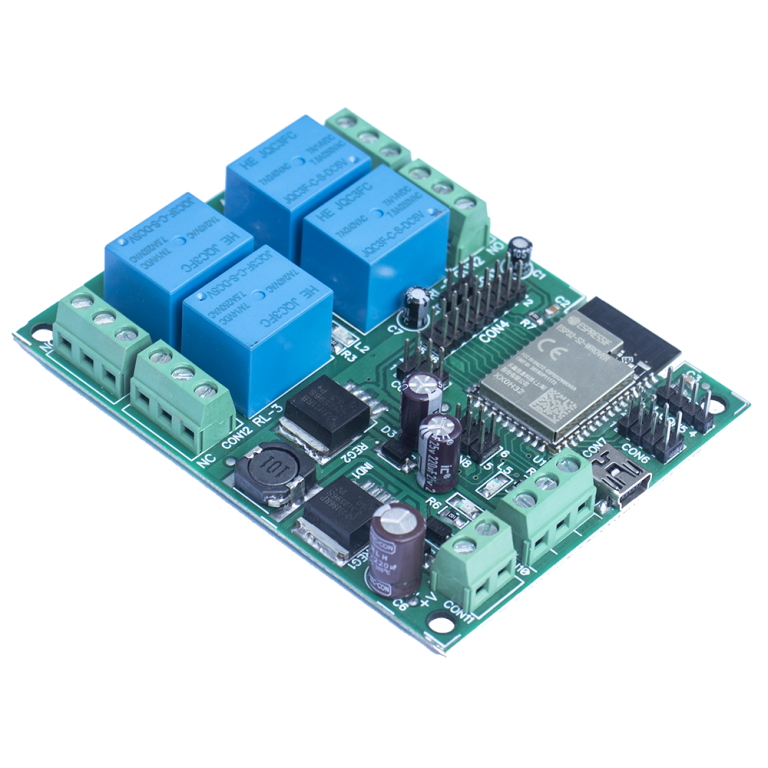Speed Measuring Sensor with Photoelectric Encoder: A Comprehensive Guide
Introduction:
In the realm of electronics and automation, precision in speed measurement is paramount for applications such as motor control, pulse counting, and position limit detection. A pivotal component facilitating these functions is the Speed Measuring Sensor with Photoelectric Encoder. This sensor, boasting a slot-type optocoupler and advanced features, ensures accurate speed detection and pulse counting capabilities.
Technical Details:
Optocoupler Sensor:
At the core of the speed measuring sensor lies the imported slot-type optocoupler sensor. This component employs light to transmit signals across an isolation barrier, ensuring reliable detection for various industrial applications.
Groove Width:
With a groove width of 10mm, the sensor accommodates precise measurements, making it versatile for different scenarios and compatible with various setups.
Output Status Indicator:
The sensor features an output status indicator, simplifying monitoring with a visual representation of the output status. The indicator light is off when the output is high and on when the output is low.
Output Logic:
Operating on a simple logic, the sensor outputs high in the presence of an occlusion and low when there is none. This binary logic eases integration into electronic systems and interpretation of the sensor’s readings.
Comparator Output:
Employing a comparator output with a clean signal and a robust waveform ensures the accuracy and reliability of detected signals. The comparator’s driving ability of over 15mA suits demanding applications.
Operating Voltage:
With a working voltage range of 3.3V to 5V, the sensor seamlessly integrates into various electronic systems, enhancing usability for different projects.
Output Form:
The sensor provides a digital switch output in the form of 0 and 1, simplifying interface with microcontrollers and digital systems for projects where integration ease is crucial.
Installation Convenience:
Designed for easy installation with fixed bolt holes on the module, ensuring secure and stable mounting for uninterrupted operation.
Compact Design:
The small PCB size of 2.3cm x 2cm makes the sensor space-efficient, particularly advantageous in projects with size constraints.
LM393 Comparator:
The use of a wide voltage LM393 comparator further enhances reliability and performance, ensuring accurate comparisons in different operating conditions.
Connection with Arduino and Sample Sketch:
Let’s explore connecting the Speed Measuring Sensor with Photoelectric Encoder to an Arduino microcontroller. The connection is straightforward, and a sample Arduino sketch is provided.
Connection Steps:
- Connect the VCC pin to the 5V output on the Arduino board.
- Connect the GND pin to the ground (GND) on the Arduino.
- Connect the OUT pin to a digital input pin on the Arduino (e.g., Digital Pin 2).
Sample Arduino Sketch:
// Define the pin to which the sensor output is connected
const int sensorPin = 2;
void setup() {
// Initialize the sensor pin as an input
pinMode(sensorPin, INPUT);
// Start serial communication for debugging
Serial.begin(9600);
}
void loop() {
// Read the digital state from the sensor
int sensorValue = digitalRead(sensorPin);
// Output the sensor value to the serial monitor
Serial.print(“Sensor Value: “);
Serial.println(sensorValue);
// Add a short delay for stability
delay(500);
}
This sketch reads the digital output from the sensor, displaying the current state on the serial monitor.
You will have to change the sketch a little bit as per your final application.
Possible Uses:
Motor Speed Detection:
Ideal for accurate motor speed detection in various applications such as conveyor belts, fans, or any rotating machinery.
Pulse Counting:
Precise detection capabilities make it suitable for pulse counting applications, essential for process control or monitoring.
Position Limit Detection:
The sensor’s occlusion detection is perfect for monitoring specific positions or ranges of motion.
Automation and Robotics:
Compact design and reliable performance make it valuable in automation and robotics for tasks like object detection, speed control, or monitoring moving parts.
Conveyor Systems:
Critical for precise speed control in conveyor systems, enhancing the efficiency of material movement.
Security Systems:
Occlusion detection can be employed in security systems for object presence or absence, applicable in door security or intrusion detection.
Educational Projects:
An excellent choice for educational projects, providing hands-on experience in electronics, sensors, and microcontroller programming.
Conclusion:
The Speed Measuring Sensor with Photoelectric Encoder is a versatile and reliable component applicable in industrial automation to educational projects. Its optocoupler sensor, output status indicator, and LM393 comparator ensure consistent performance. Accessible for both beginners and experts, its compact design, wide operating voltage range, and straightforward interface make it valuable for engineers, hobbyists, and students. In the evolving landscape of technology, components like this sensor play a pivotal role in shaping automation and electronic applications.
You may also like:
Ultrasonic sensor HC-SR04 with Arduino.
Pressure sensor BMP-280 with Arduino.
Motion Sensors: A Comprehensive Guide.
What are the applications of Arduino in robotics and home automation?




















+ There are no comments
Add yours